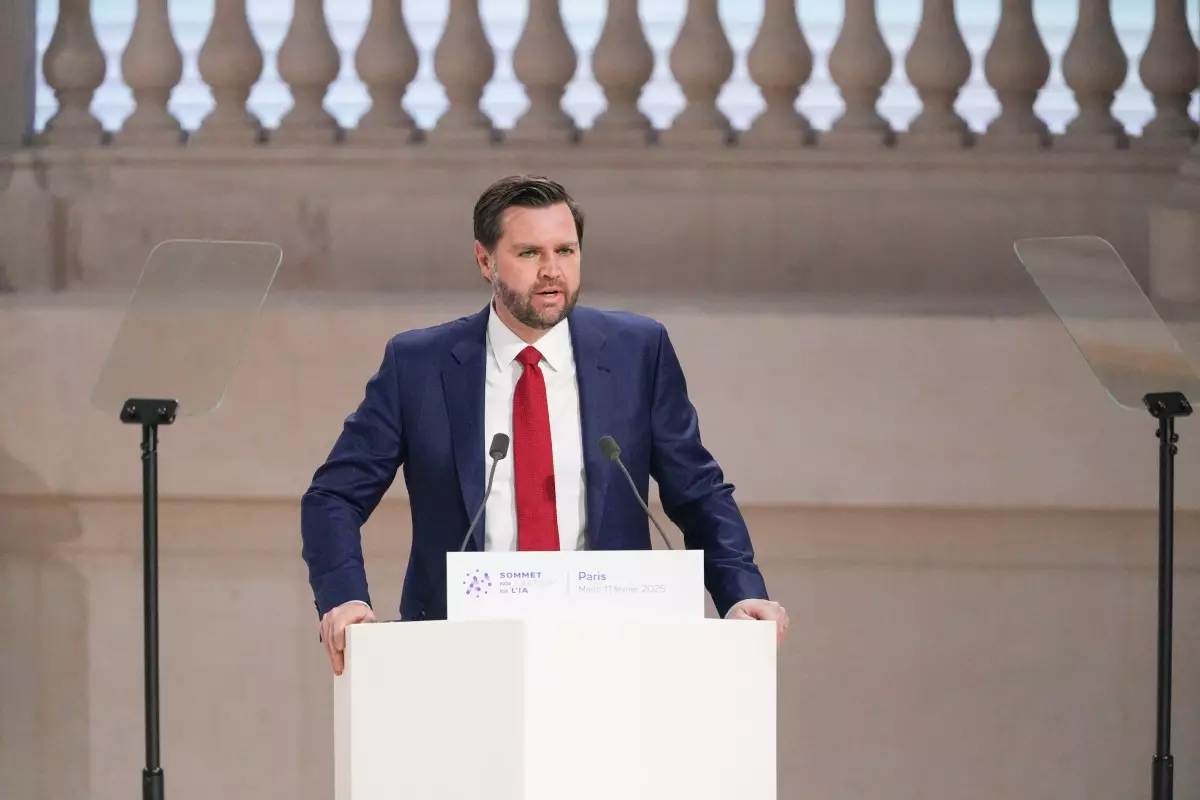The recent AI Action Summit in Paris has emerged as a significant event in the rapidly evolving landscape of artificial intelligence. Notable for its high-profile attendance, including government officials, industry leaders, and regulators, the summit served as a platform for discussions centered on the future of AI. The presence of U.S. Vice President J.D. Vance drew attention, particularly given the U.S. decision not to align with the collective statement of the summit. This unfolding narrative raises questions about the balance between fostering innovation and ensuring safety in AI technology.
Vice President Vance’s address at the summit epitomized a firm stance on the need for the U.S. to maintain its upper hand in artificial intelligence. His speech emphasized a perspective that appears to favor less regulation and prioritizes economic opportunity over concerns about risks associated with AI systems. Vance asserted that current debates about AI safety need to shift towards recognizing its potentials for economic growth and transformation. By suggesting that the U.S. would develop an action plan free from excessive regulatory constraints, Vance positioned his administration’s view as one focused on harnessing the innovations driving the sector forward.
While addressing an audience that included international representatives, Vance extended an invitation for collaboration, urging other nations to consider adopting a model similar to that proposed by the U.S. This aspect of his speech underscores a broader geopolitical narrative in which the U.S. seeks to assert its influence not only as a leader in AI innovation but also as a preferred partner for nations building their tech infrastructures. However, this call appears somewhat disregarding of existing frameworks, particularly those guided by the European Union’s stricter regulatory environment, possibly leading to friction over differing approaches to AI governance.
The Vice President’s dismissal of AI safety debates as overly cumbersome reflects an intriguing dichotomy in the discourse surrounding both innovation and regulation. He highlighted a need to focus on “opportunity” rather than “safety,” which reflects a broader shift in policy sentiment within certain factions of the U.S. administration. However, this reticence towards acknowledging legitimate concerns about AI has the potential to trivialize important discussions around ethical uses of technology and the existential threats posed by unregulated AI systems. This creates a delicate balance; stakeholders must advocate for progress while not overlooking the repeatable lessons of the past regarding technological regulation.
Vance’s remarks also delved into the impact of AI on the workforce, framing it as a tool for job creation rather than elimination. This narrative is critical, especially in an environment where industry shifts brought about by AI lead to significant workforce reductions across multiple sectors. Advocating for a “pro-worker growth path,” the administration suggests that AI could become a means to bolster employment rather than replace it. Yet, skepticism remains about how these intentions translate into tangible outcomes, particularly without a clear regulatory framework to guide the ethical integration of AI into businesses.
A crucial aspect of Vance’s speech was its overarching simplicity regarding the implementation of his administration’s vision. High-level talks may audibly resonate with principles favoring innovation, but the complexities of actual implementation reveal vulnerabilities. Without articulating how these policies would operate in the arena of international technology or how they might influence the operations of both startups and established tech giants, much of the discussion remains abstract. He did not clarify how a so-called “level playing field” could feasibly materialize amidst existing disparities between large corporations and smaller entities seeking to innovate.
The discourse on AI regulation encapsulated at the summit reflects broader tensions within the global landscape. As European leaders, like Ursula von der Leyen, advocate for comprehensive safety regulations, the U.S. appears adamant about avoiding regulatory constraints that may hinder competitive advantage. This divergence heralds possible geopolitical rifts in technology governance—where the U.S.’s call for deregulation and innovation clashes with the EU’s more precautionary approach.
As artificial intelligence continues to reshape economies and societies, the trajectory of regulatory approaches will significantly influence its development. The discussions from the AI Action Summit illuminate the urgency for a balanced dialogue that embraces the dual needs of safety and innovation. How the U.S. and other nations reconcile their differing viewpoints will be pivotal in determining the ethical landscape of AI and its alignment with the principles of robust governance and collaborative growth. Clarity in policy execution and the safeguarding of collective interests will determine whether opportunity will indeed outweigh the pressing concerns related to AI safety.

